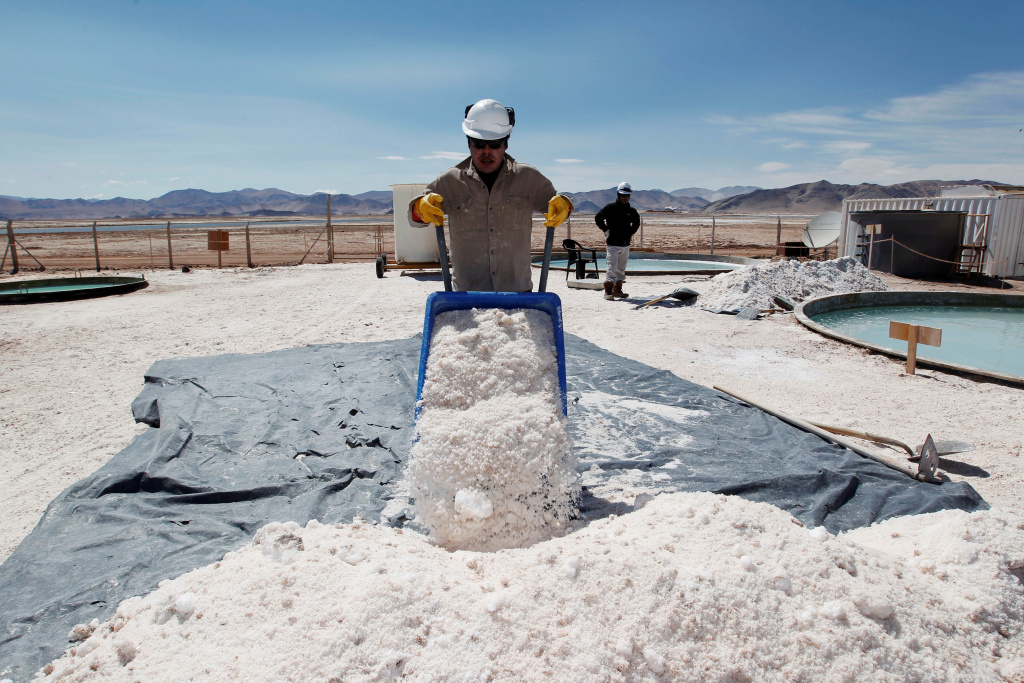Opportunities for the EU in Central Asia’s Lithium Industry
In
Log in if you are already registered
Central Asia has long been viewed as a region searching for routes to export rich oil and gas resources to the global market. Currently, with its pipelines heading to Europe crossing through Russia's vast territory and the closest warm seaports in sanctioned Iran, there are few options for Kazakhstan, Uzbekistan, and Turkmenistan to trade their energy around the world. Yet, with advances in the automobile industry from traditional fuels to lithium batteries, the states of Central Asia will have an opportunity to diversify their industrial capacities.

Source: Reuters
The demand for lithium-ion batteries will rise elevenfold by 2030, and the market size will reach about 91.9 billion US dollars from around 40.5 billion dollars in 2020. In the meantime, the rush for lithium batteries provides stable prices for the mineral as spodumene, a lithium-rich raw material, jumped 478% from January 2021 to January 2022.
Not only does this tendency underlie fundamental conditions for the Central Asian countries, but it also enables them to absorb the Afghan lithium by the Soviets and keep it secret until 2004. After the role of India diminished with the establishment of the Taliban government in Kabul, the five states of the region could offer the only alternative to China for the industrialization of this strategic mineral and export to the European market.
Along with lithium, the region possesses other critical minerals for energy transition. Out of global proven reserves, 38.6% of manganese ore, 30.07% of chromium, 12.6% of zinc, 5.3% of copper, 5.3% of cobalt, and 5.2% of molybdenum, 1.2% of nickel are located in Central Asia. For example, China produces lithium-ion batteries using nickel and cobalt imported from Central Asia. The resource-rich ecosystem enables on-site production of essential parts of wind turbines and batteries before transportation to Europe for the next stage of the manufacturing process or installment into technologies. In this way, resource-hungry European industry alternates its suppliers.
European Lithium reported that Europe was the second largest lithium consumer with 21% after China with 40% and before Japan and South Korea in 2015. Considering that Europe accounts only for 1% of the global lithium supply and the continent is an agglomeration of car manufacturers, industrial leaders benefit from supporting battery production capacities in Central Asia. Furthermore, trade rivalry with China (the third biggest lithium producer with 19,000 tons in 2022) makes the European countries seek new suppliers for their automobiles and other related industries to continue the “clean energy” revolution.
In the current trend without the diversification of suppliers, the European Union is expected to be dependent on the lithium-ion batteries produced in China as the energy sector of the continent’s several countries was overconnected to Russian gas.
Tensions with Russia over the war in Ukraine have also interrupted energy lines and made the European Union more eager to substitute fossil fuel with green energy. In the meantime, most governments realized that overdependence on Russian gas would lead to political and economic consequences. However, Central Asian oil and gas – an alternative option – have no direct way to the EU members, and the transportation of lithium batteries from the region costs more favorably as a part of green energy programs.
As a response to the trends, governments of Central Asian states are initiating projects to enhance lithium mining or to construct lithium-ion battery capacities. In October of 2022, Kassym-Jomart Tokayev, President of Kazakhstan, asked the Geological Service to intensify exploration and development of lithium deposits that are estimated from 50,000 to 100,000 tons. Less than a month later, Condor Energies Inc. of Canada announced that the company acquired the first license to operate in Kazakhstan where seven lithium fields are confirmed.
In the spring of 2023, the Deputy Minister of Mining Industry and Geology of Uzbekistan Azam Kadirkhodjayev at the international industrial exhibition “Innoprom. Central Asia” reported that the country was preparing to launch the mining and processing of lithium that includes “Shovvozsoy” mine in Tashkent region with 123,000 tons of reserves. Meanwhile, Uzeltexsanoat informed about the “Led Ultra Energy” enterprise in Koshkopyr district of Khorazem region that is planned to produce batteries by the year's end.
Similarly, Turkmen company Kökçi claims that it has manufactured more than 36,000 batteries for cars and trucks in 7 types of storage by recycling old batteries and sold them to local markets and Afghanistan.
Although the offspring companies of the region are incomparable to their counterparts of the Latin American Triangle, Australia, and China, they indicate the government readiness to cooperate in that field that can be developed as an alternative source to supply renewables to the European Union. Logistic inadequacy of Australia and Latin America along with strategic disputes with China put Central Asia in a better position for the companies of Europe.
In addition, the European Parliament agreed on not exceeding its strategic material dependence on a single country from 65% till 2030. In the plan, emerging markets account for up to 20% of new processing capacity. To reach its goal, the European Union can find contributors from the Central Asian region.
As the EU is defined as a latecomer in the digitalization process of the region, the member states and manufacturers of the Union have still an opportunity to lead the energy transformation and industrial diversification as well as multilateral economic relations of Central Asia. In this way, European countries will sustain a bridge to trade with Afghanistan through land bases of its northern neighbors as China took the upper hand at seaports such as Gwadar.
The recent energy crisis sparked by the weaning off from Russian energy demonstrates the disadvantages of over-dependence on a single supply line. Most EU countries are learning their lessons, but further contingencies must be considered. One option worth considering is a win-win agreement with Central Asia by boosting their lithium mineral industry can give an option for the European industry itself in case of a similar crisis in the era of renewable energy.




